
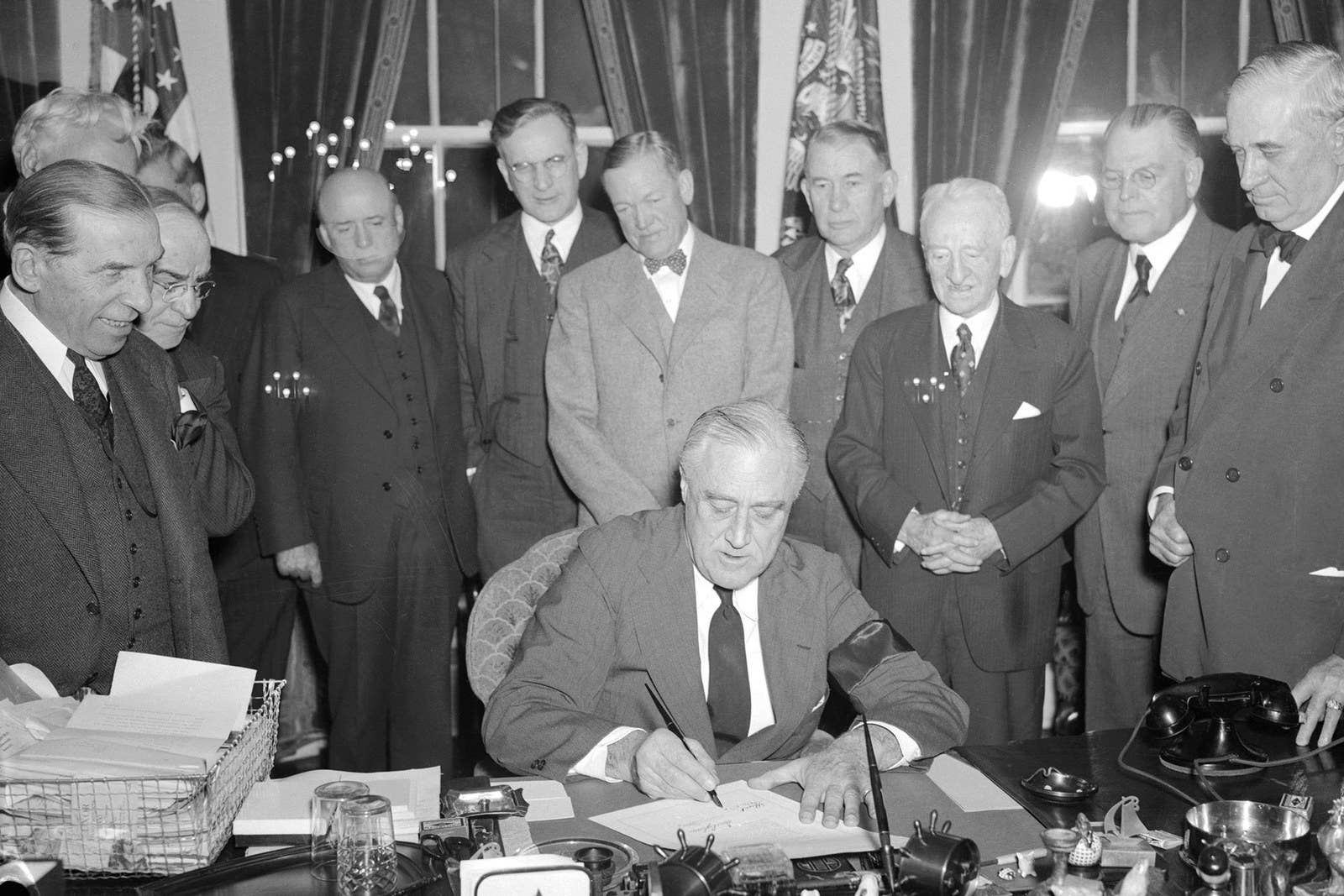
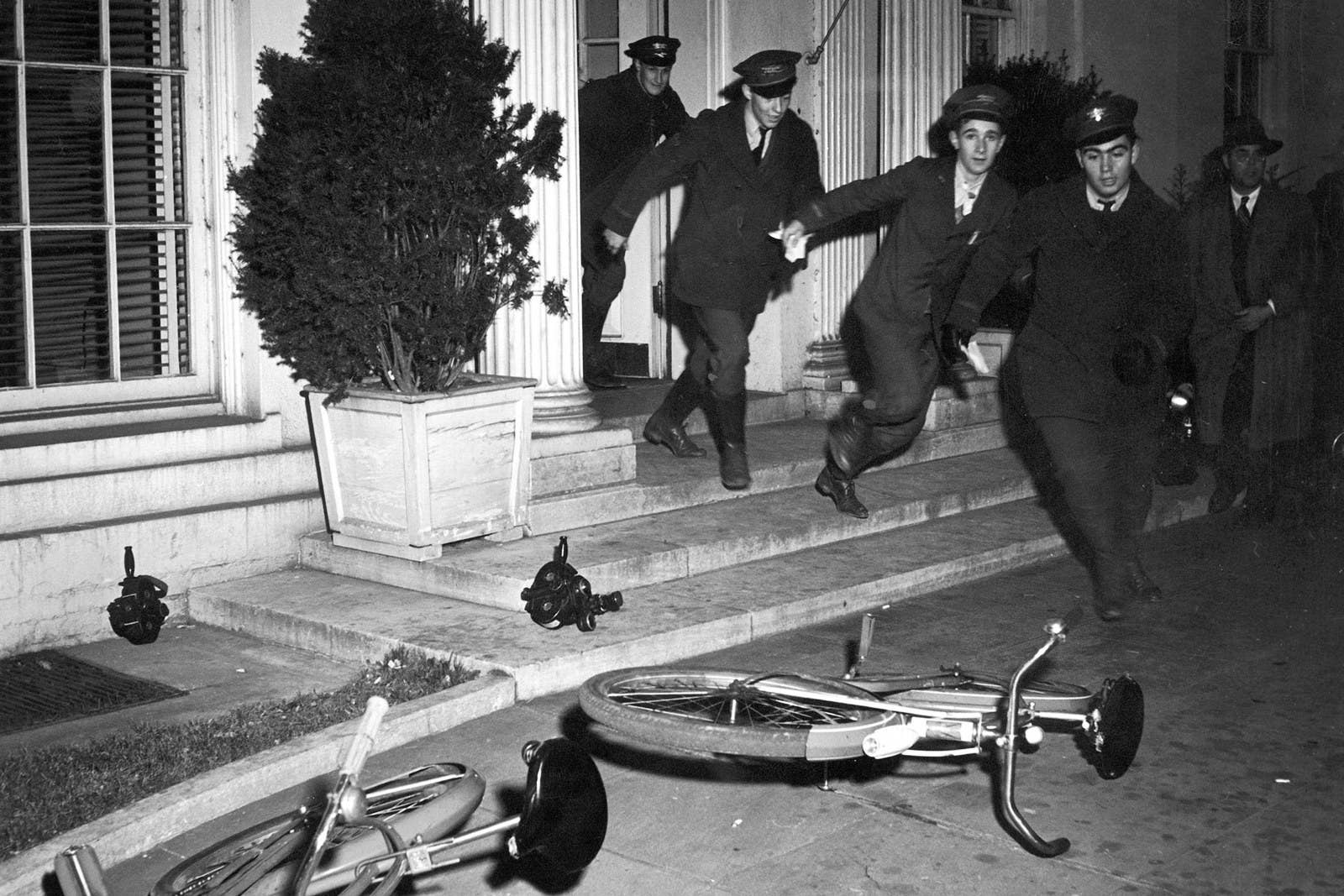
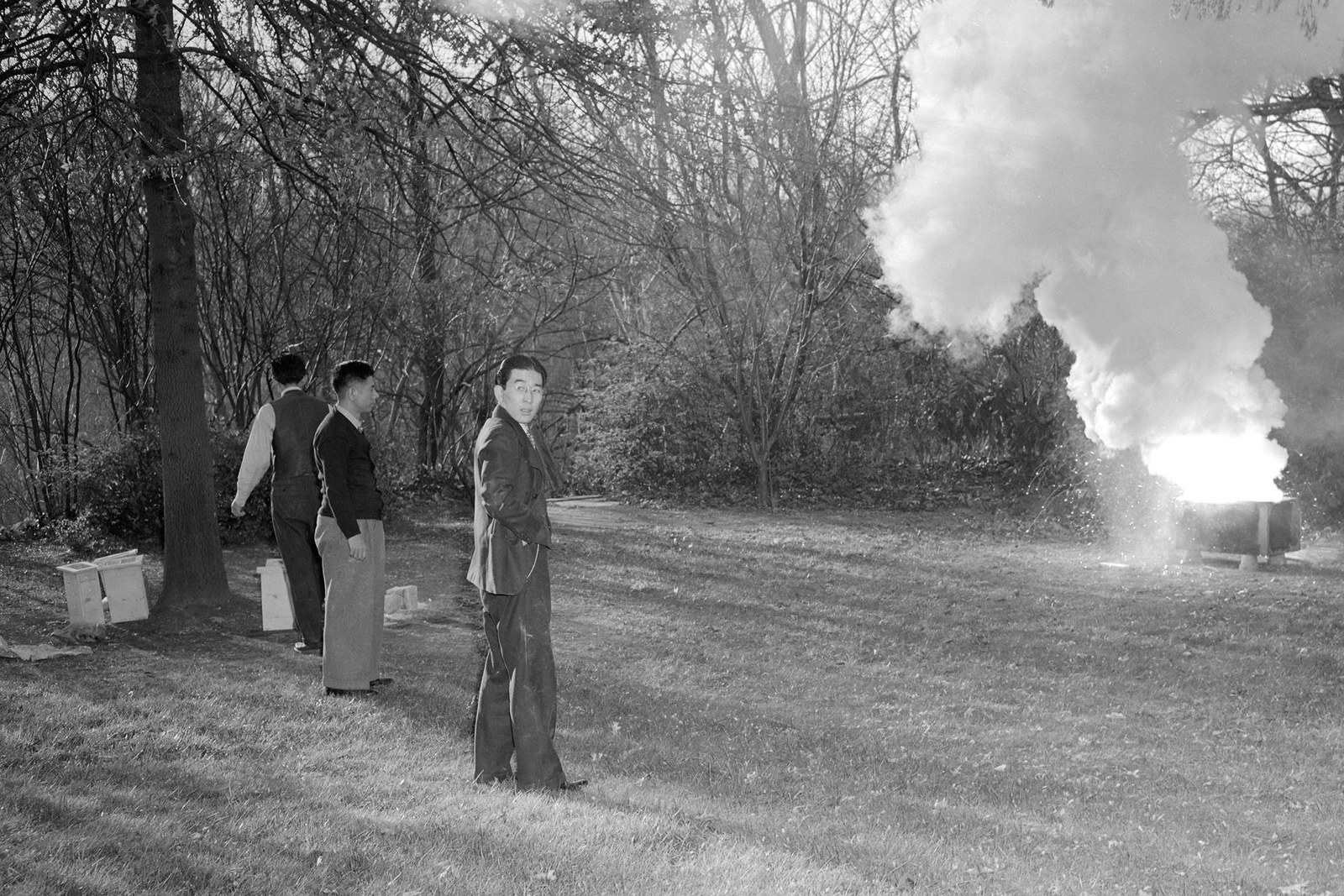
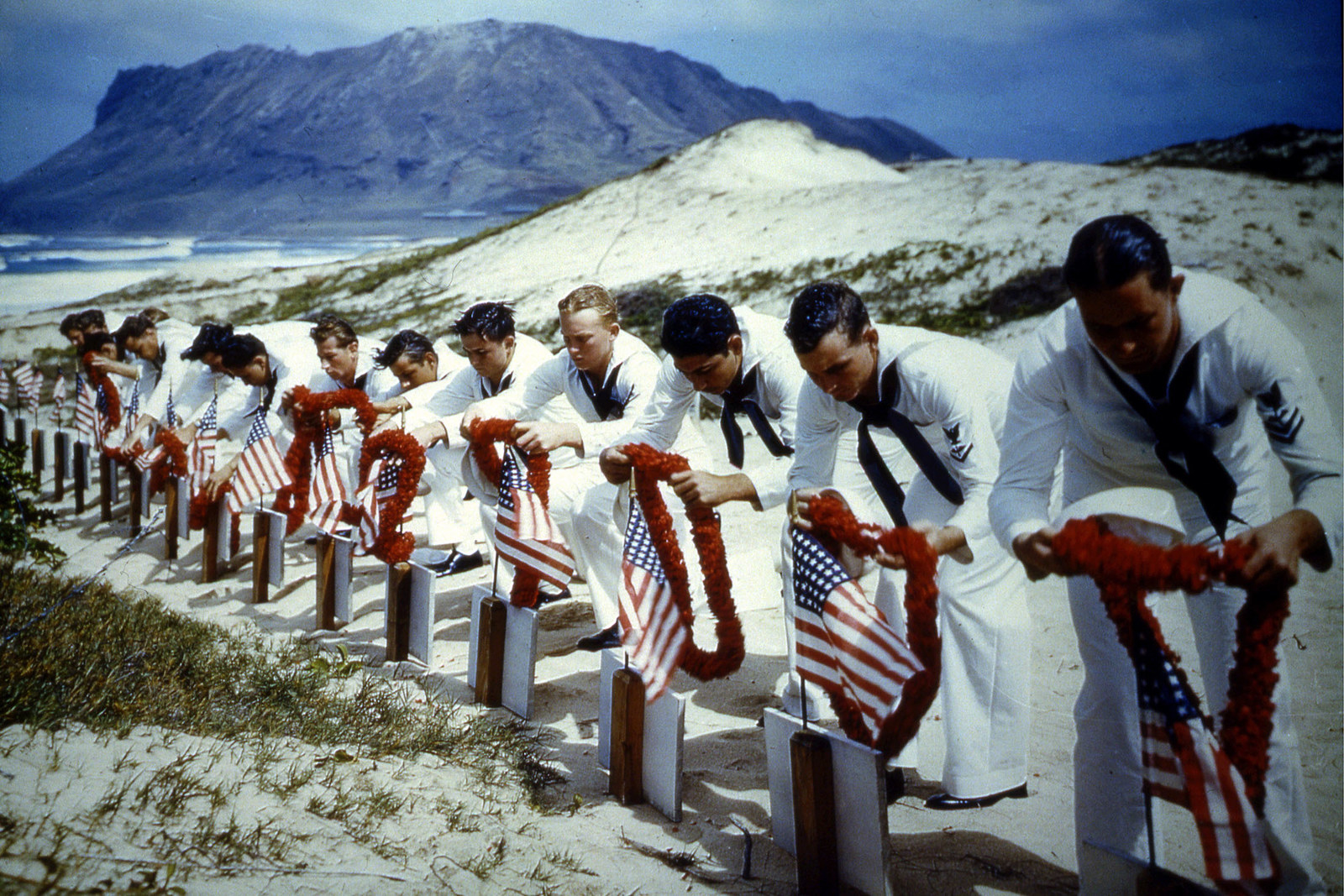
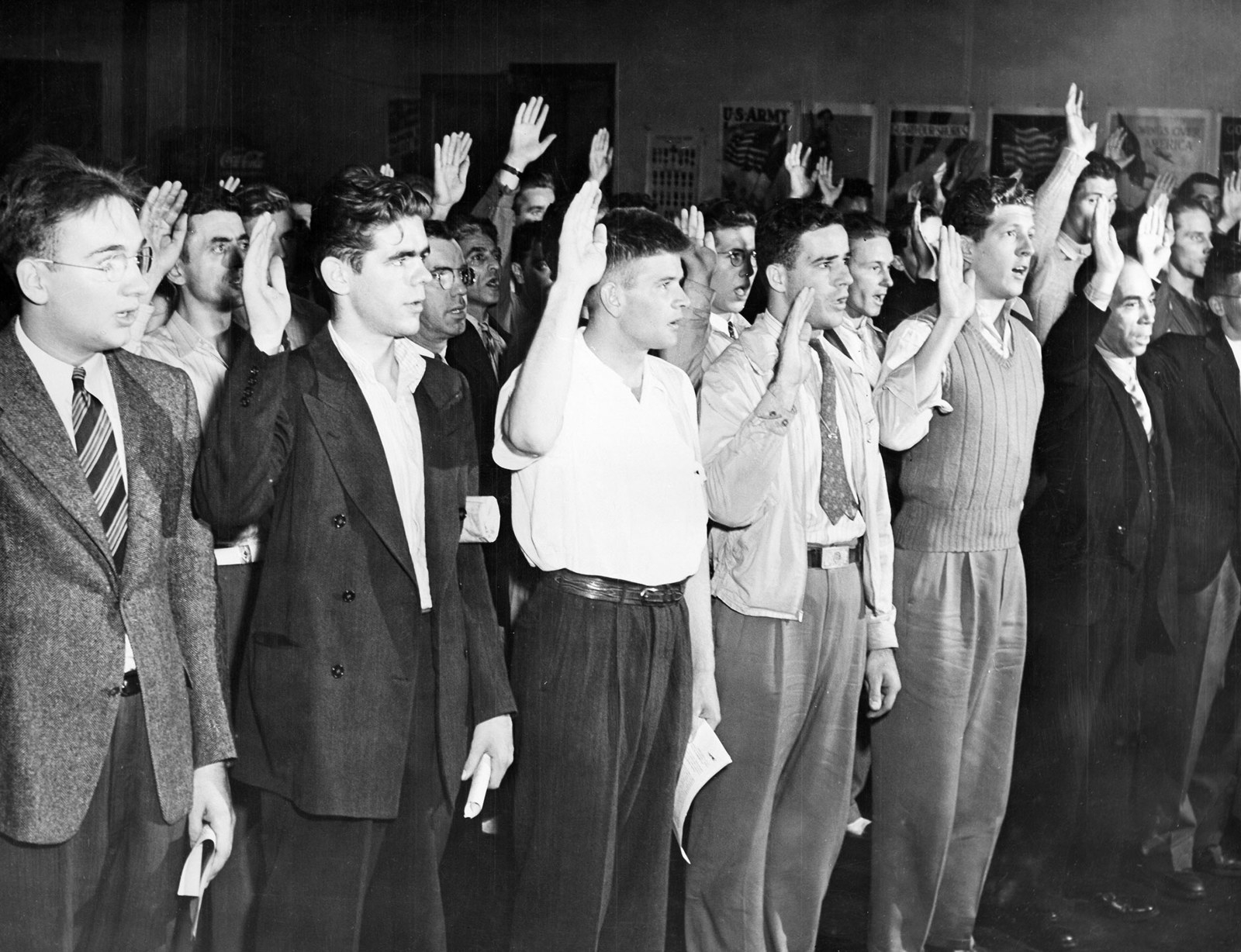
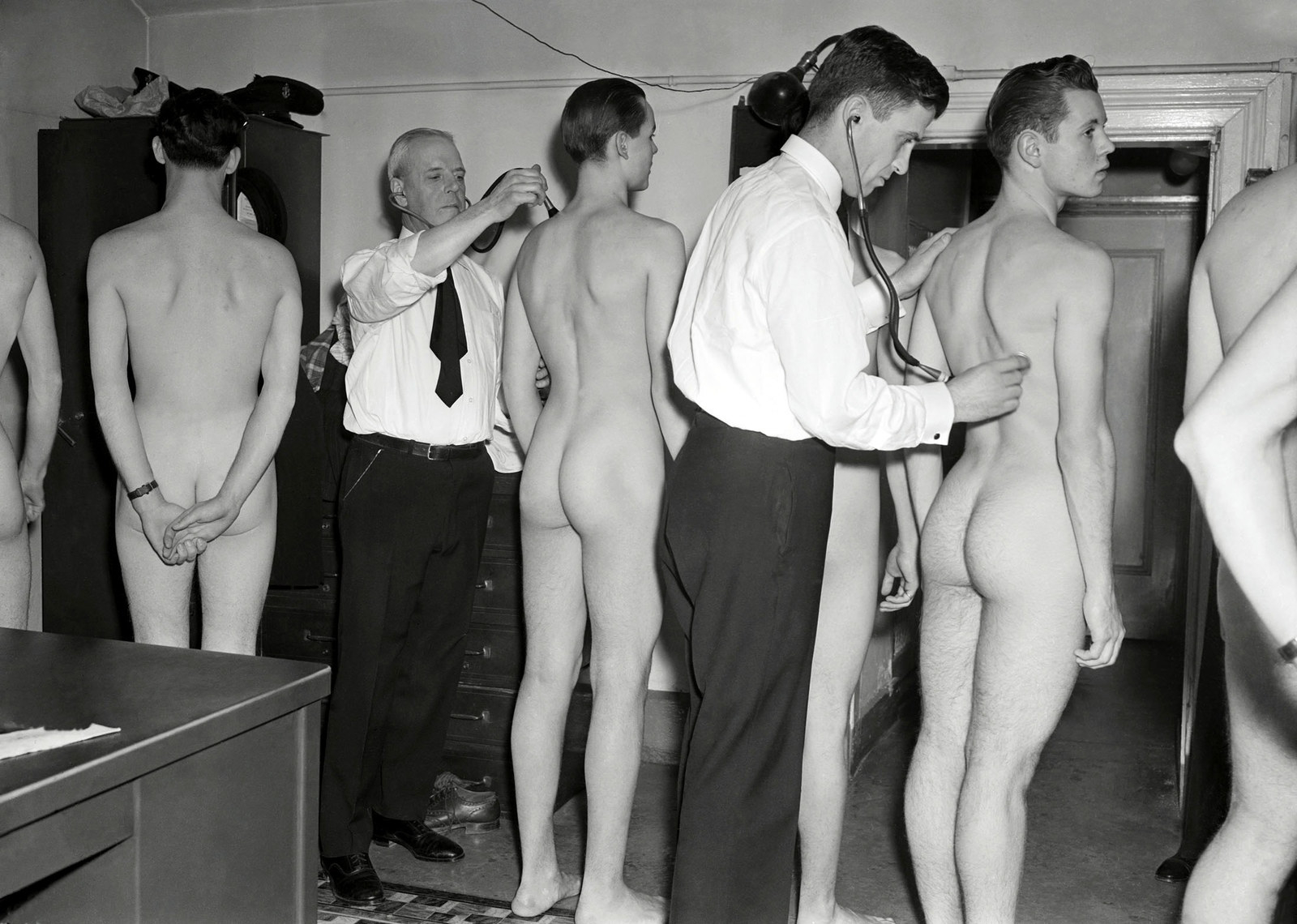
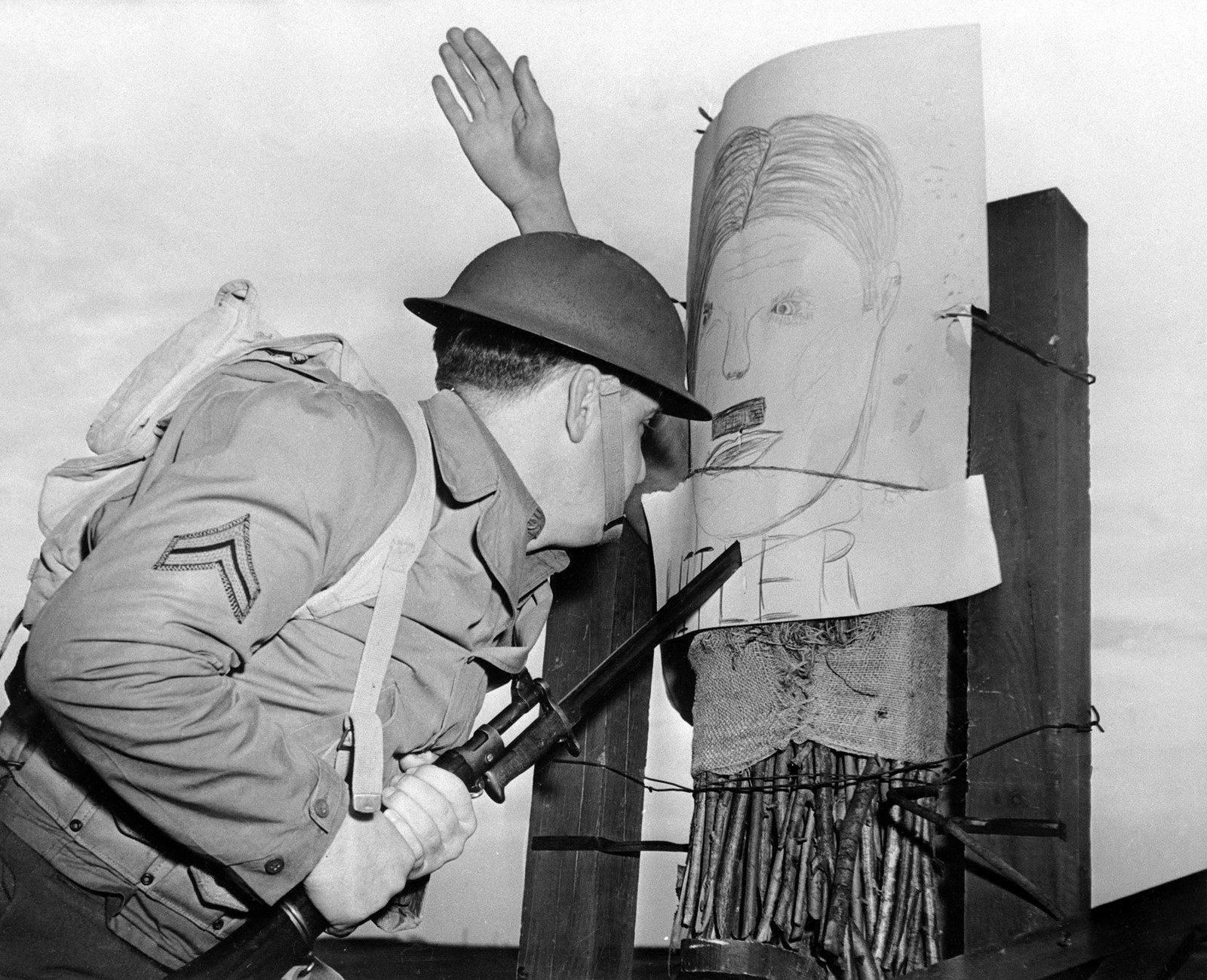
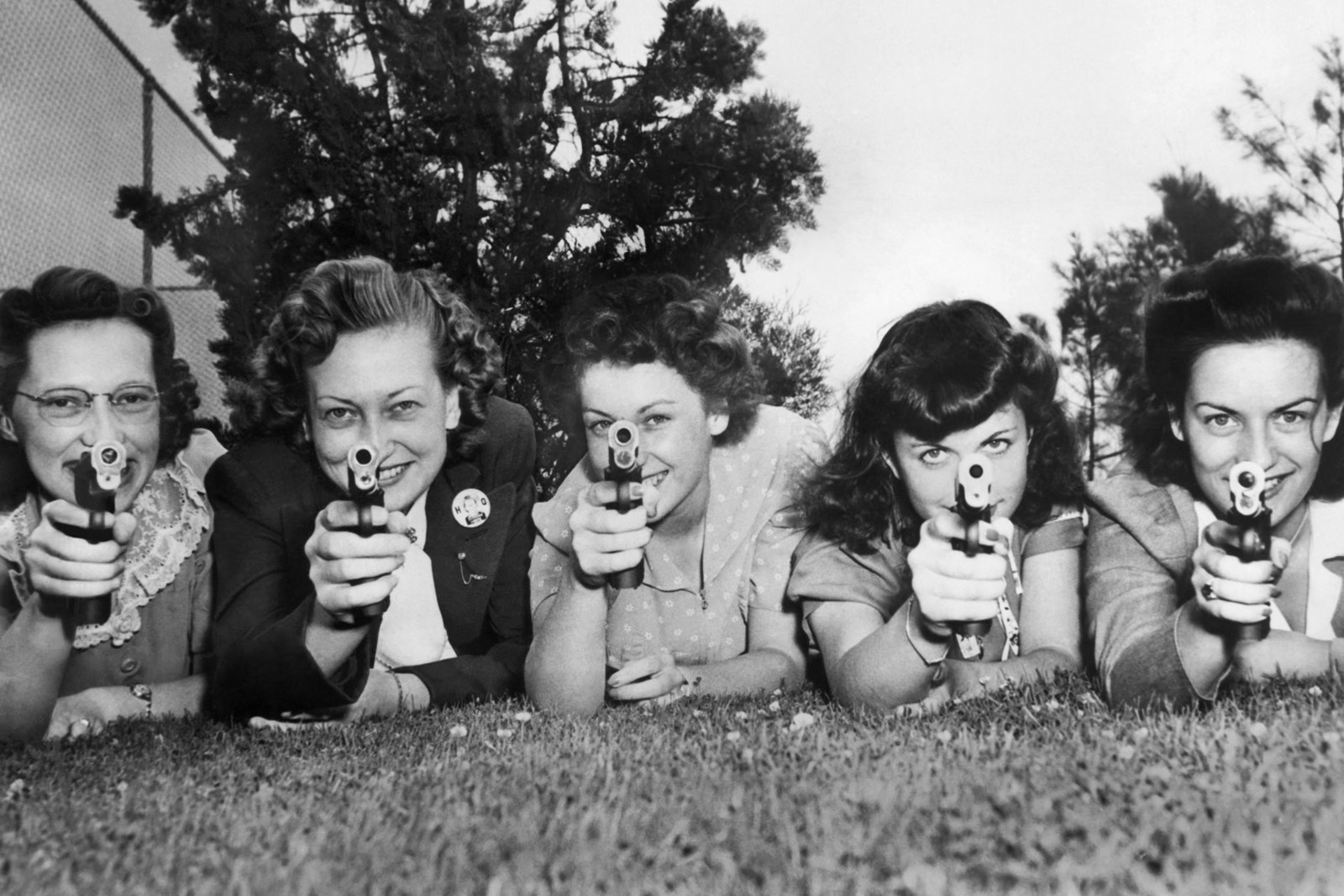
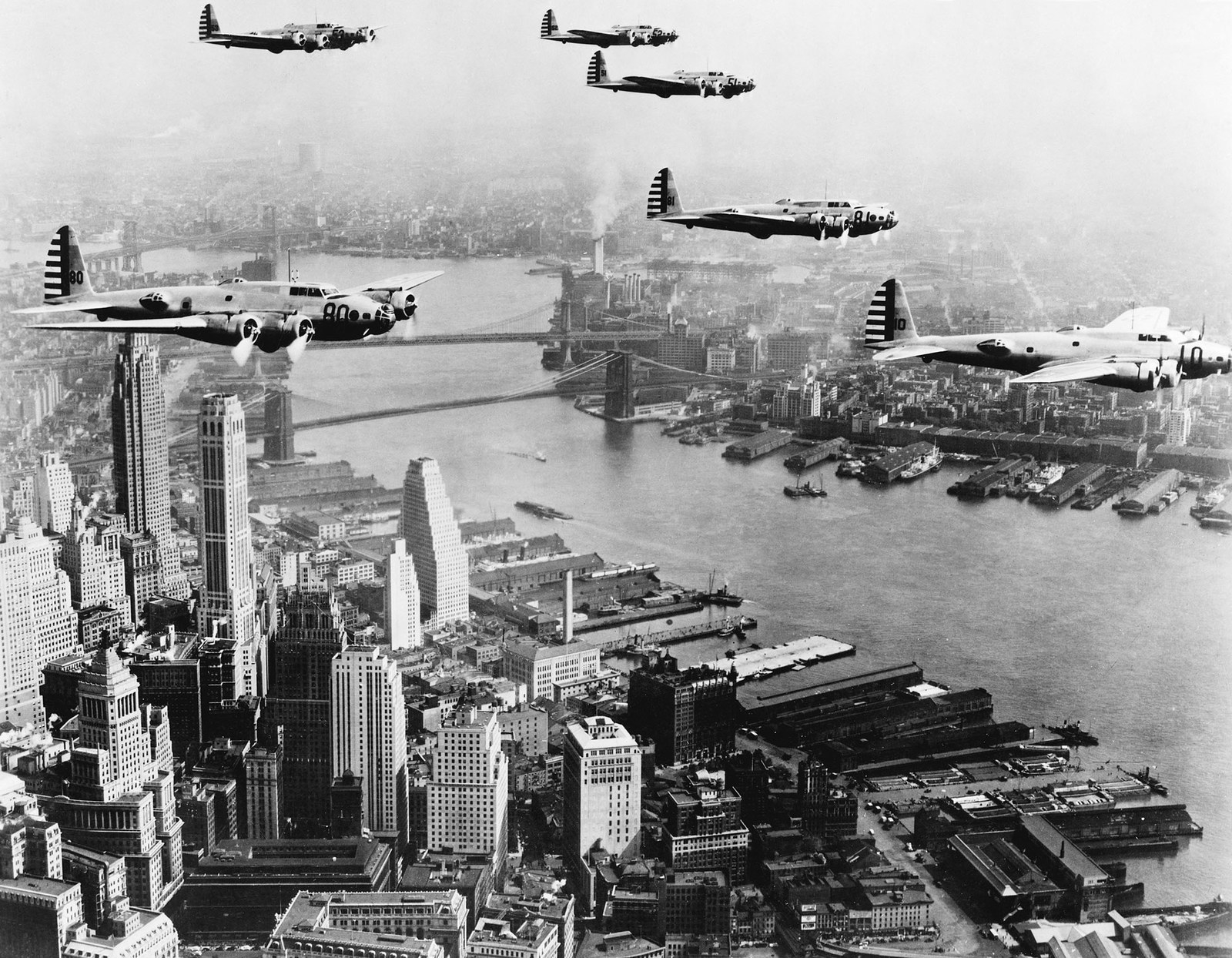
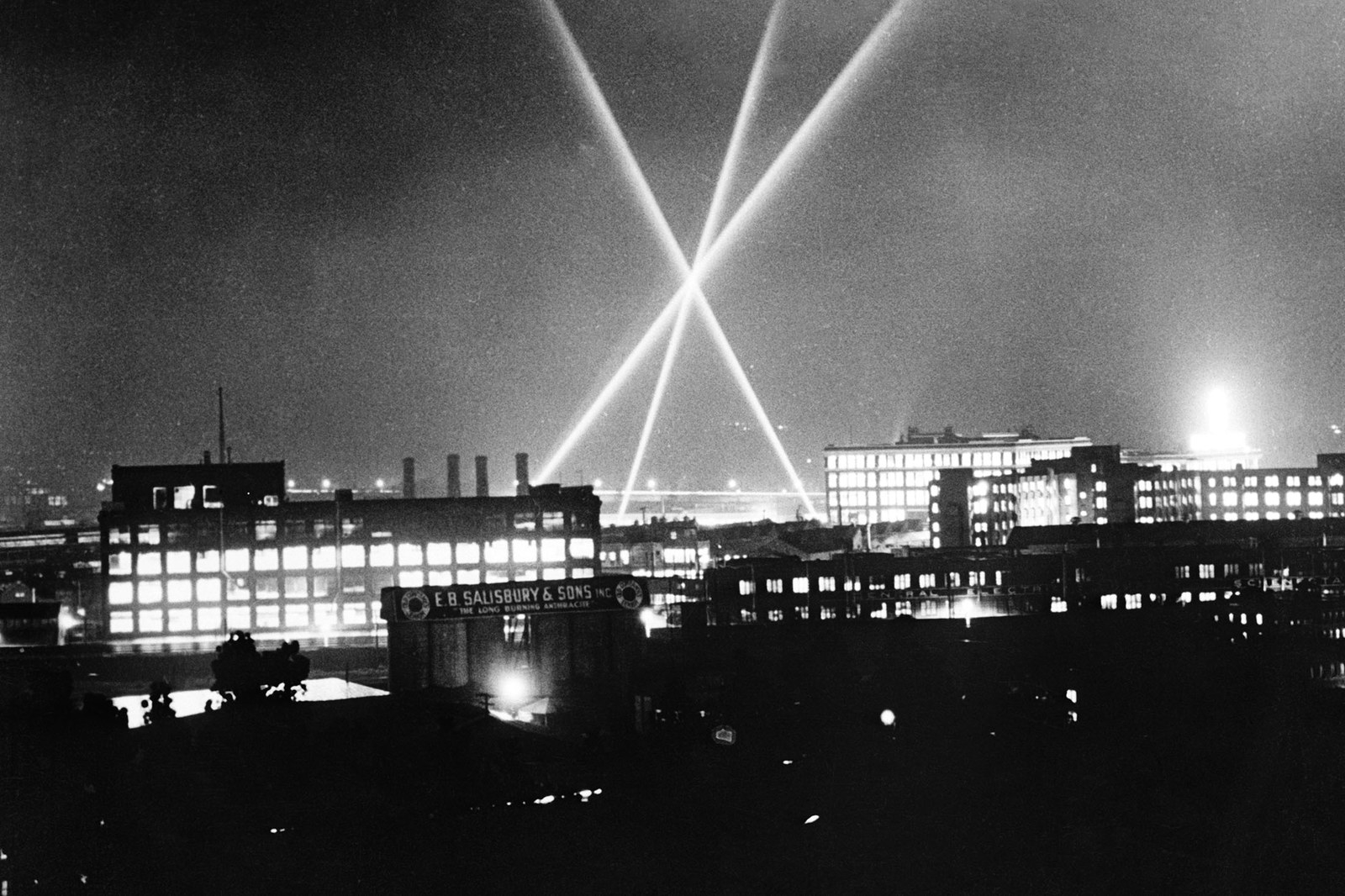

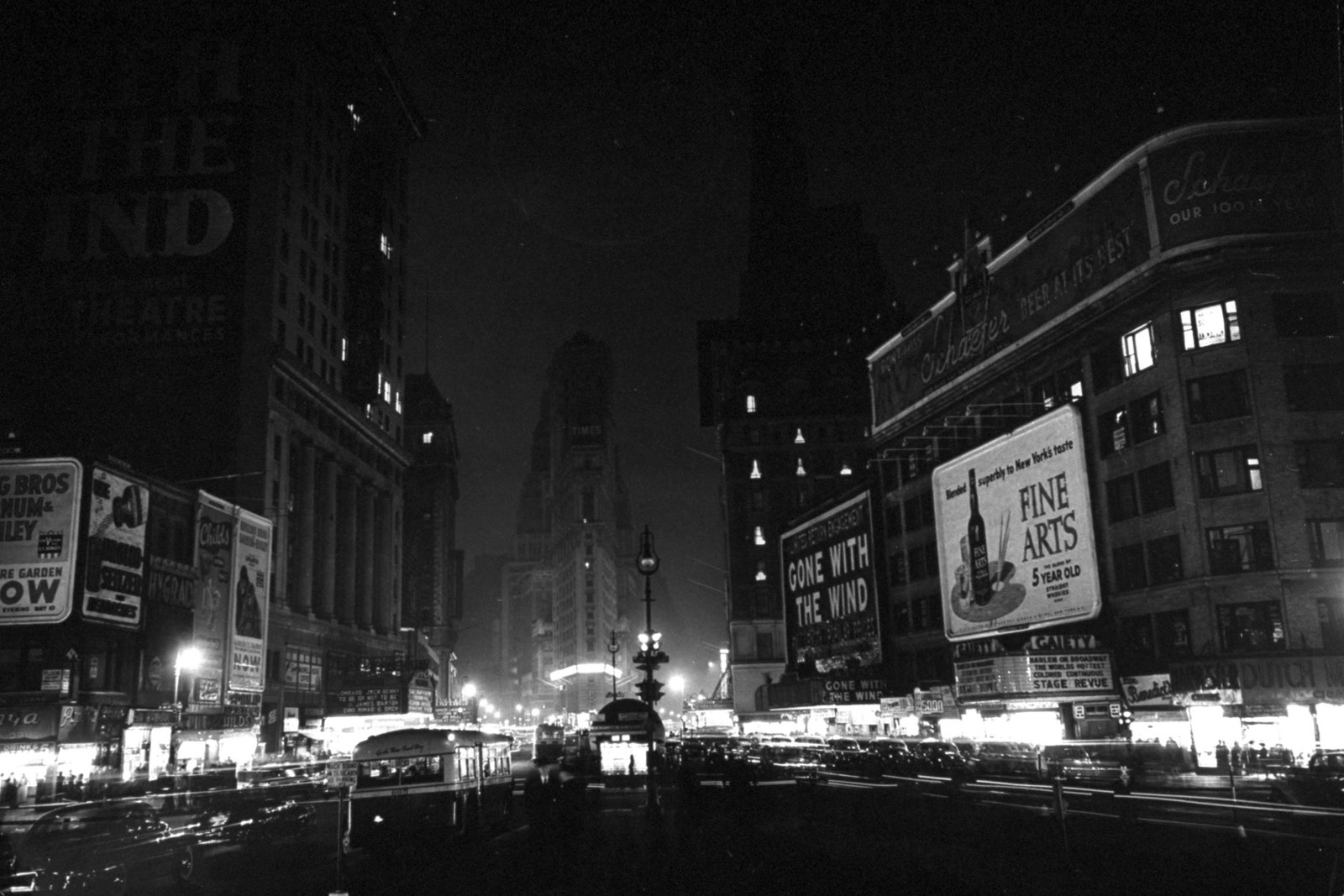
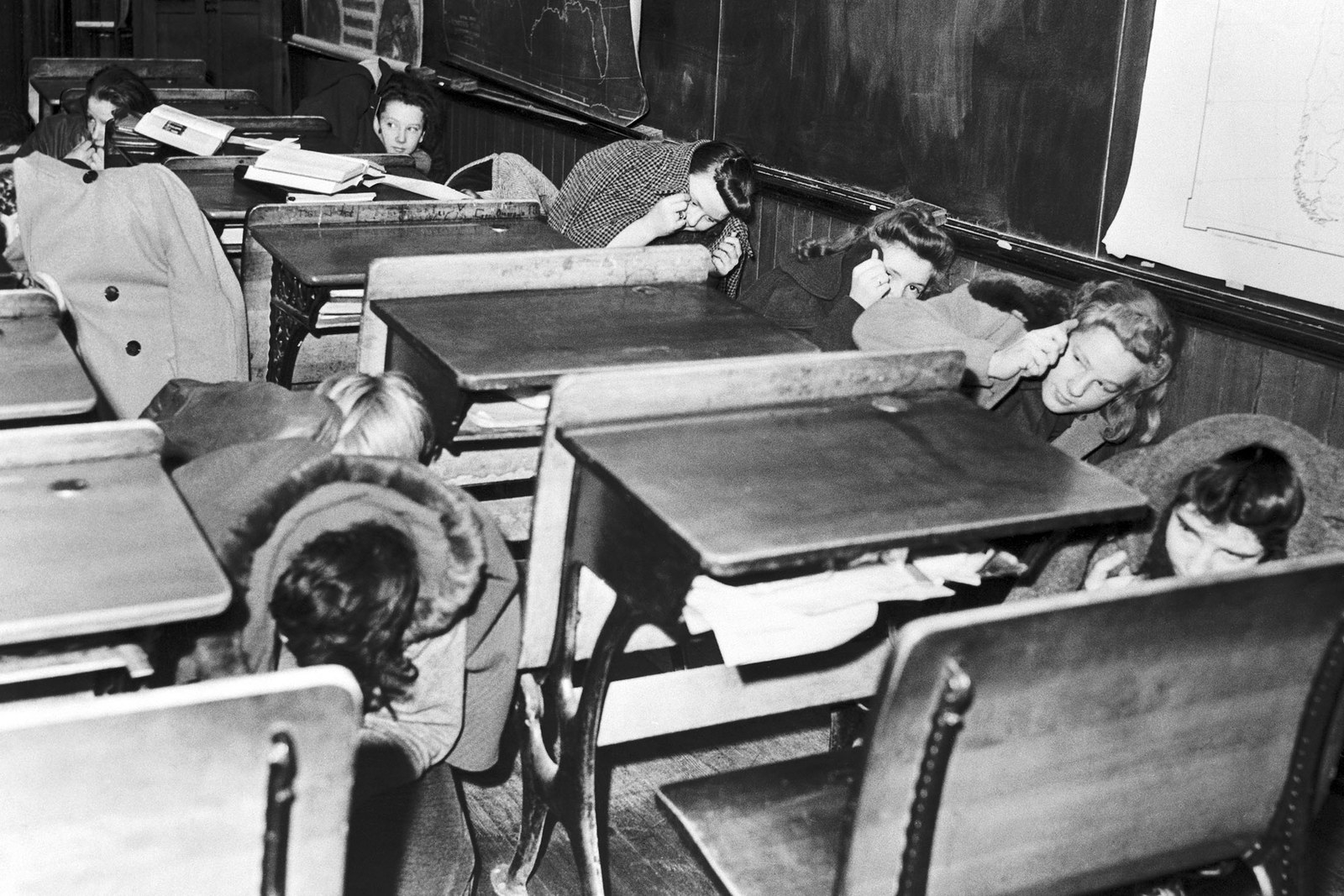
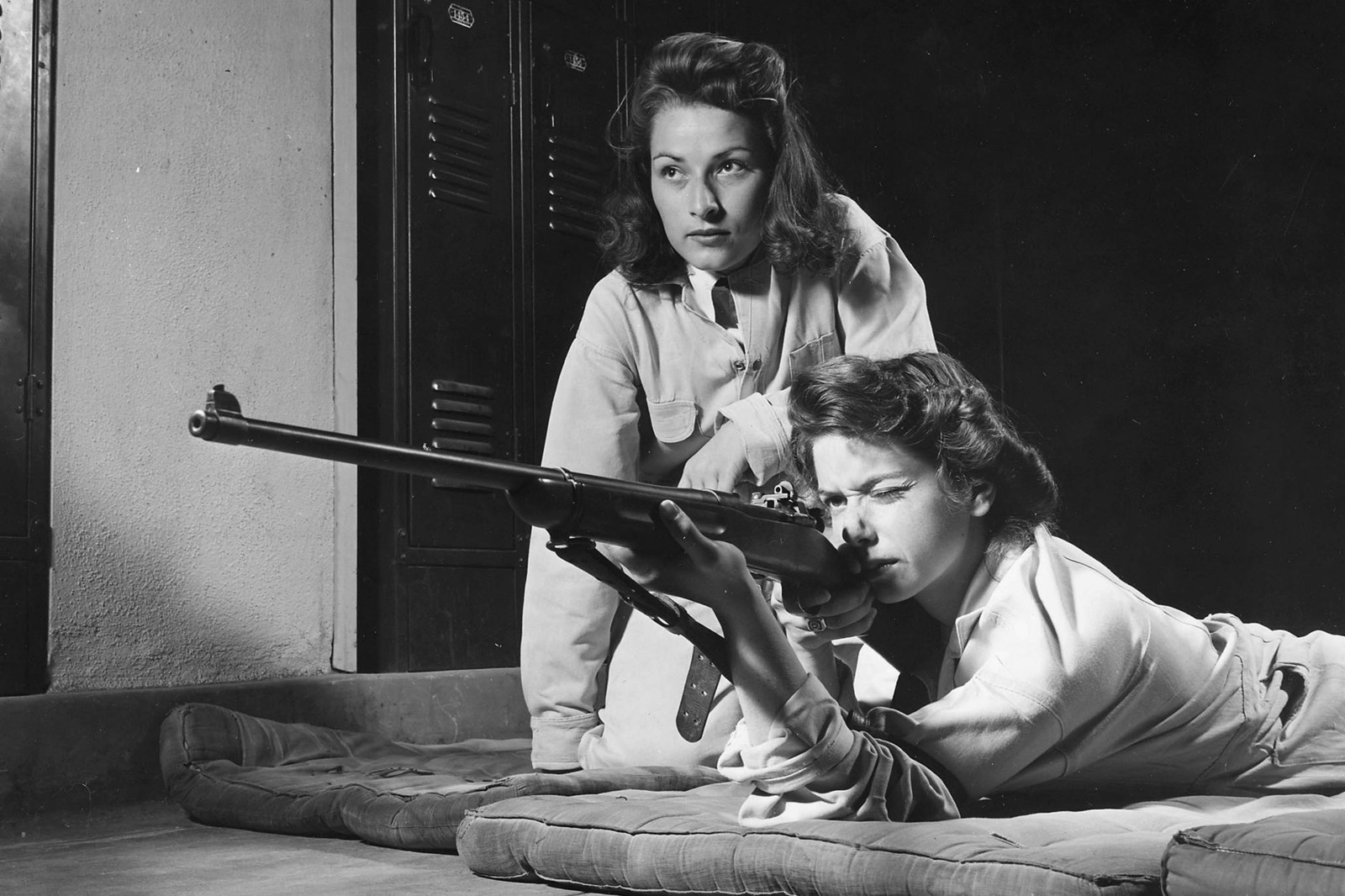
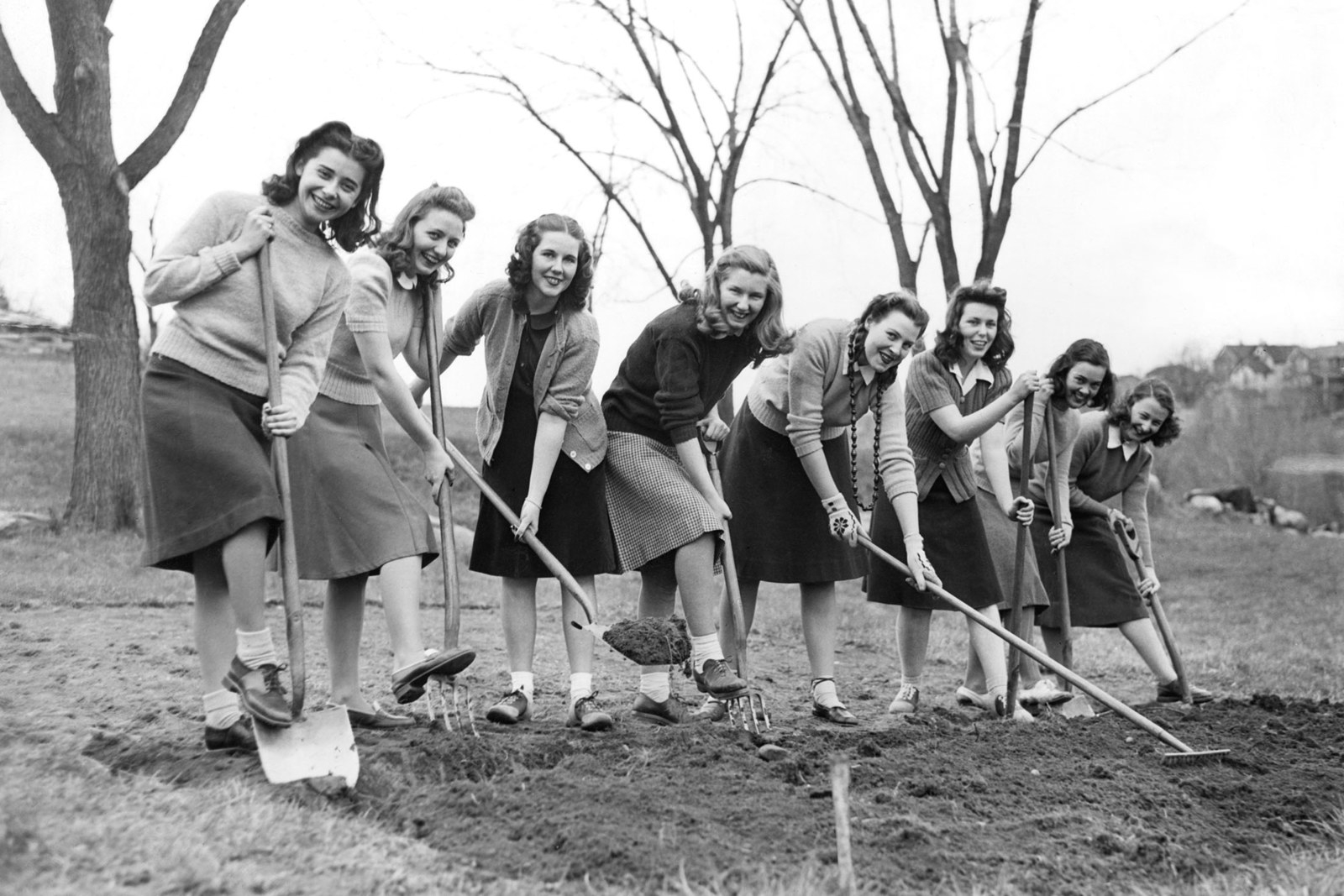
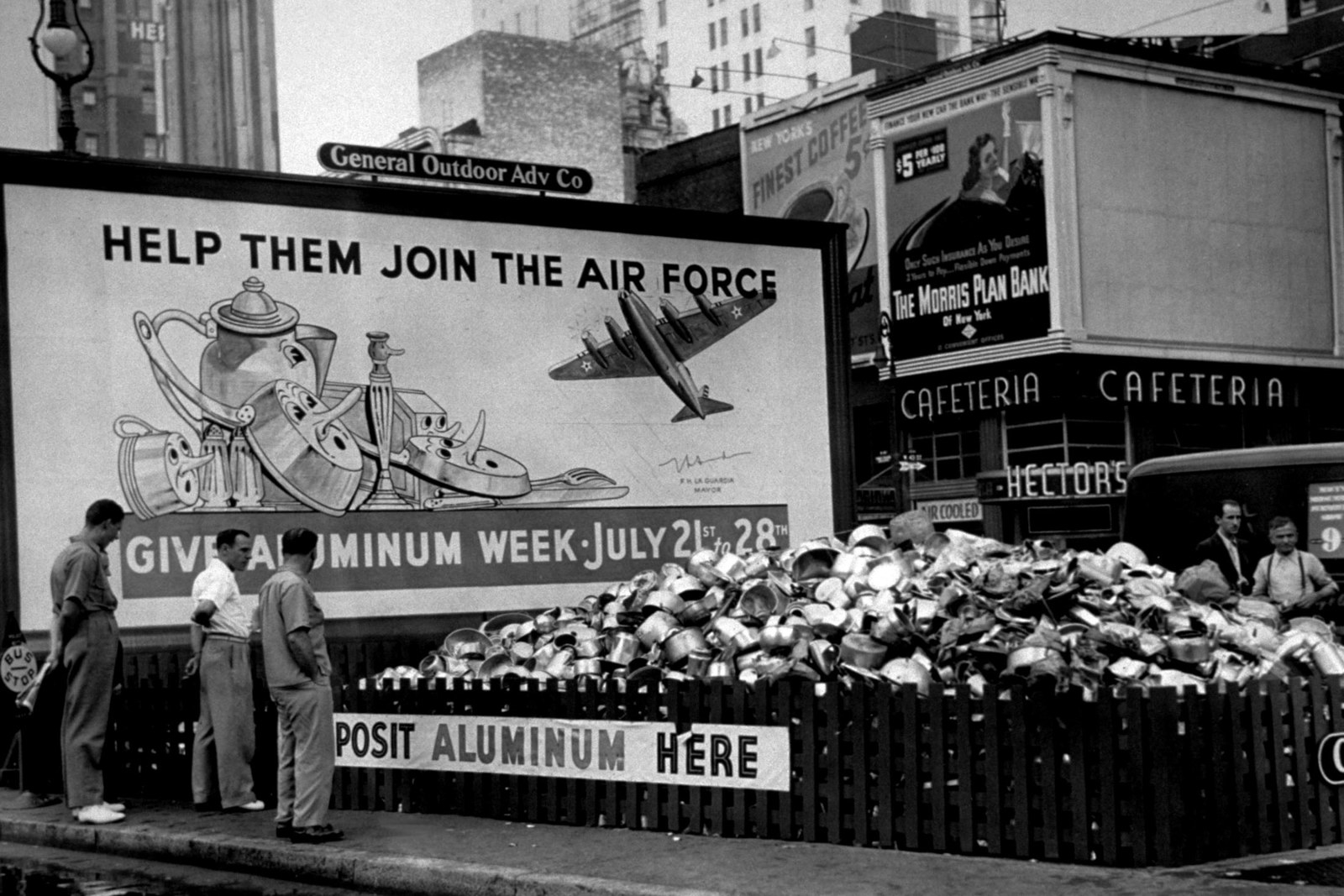
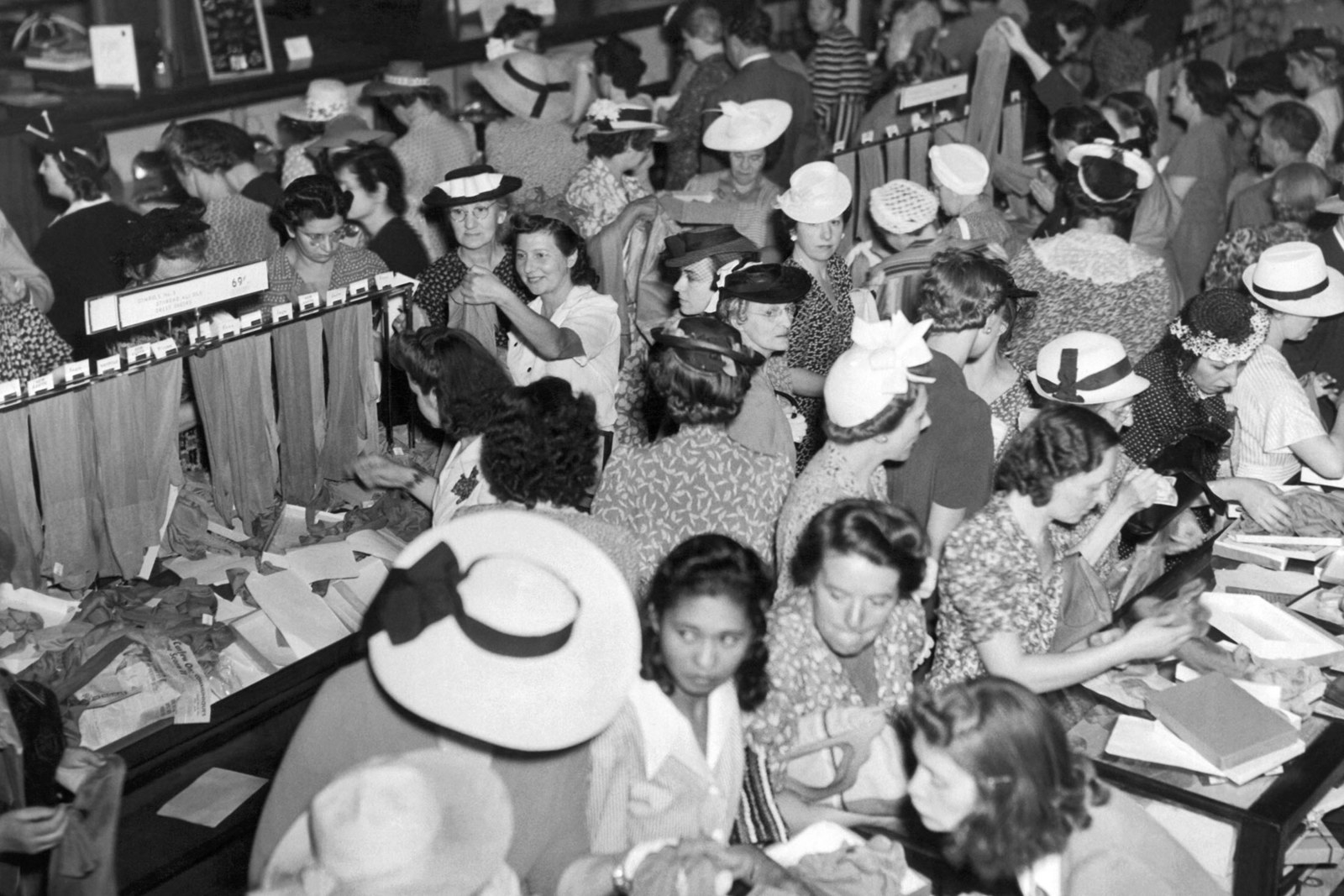
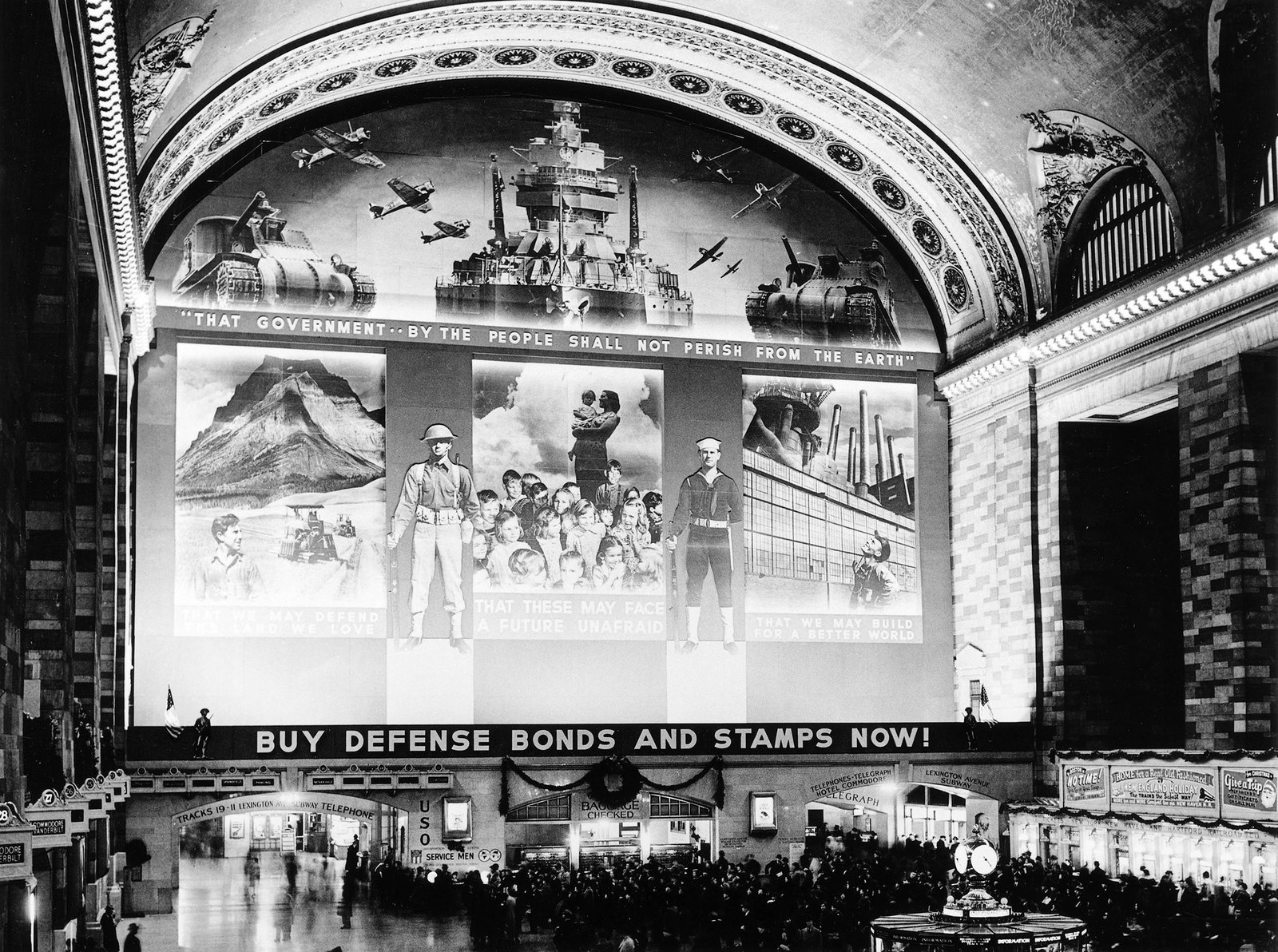
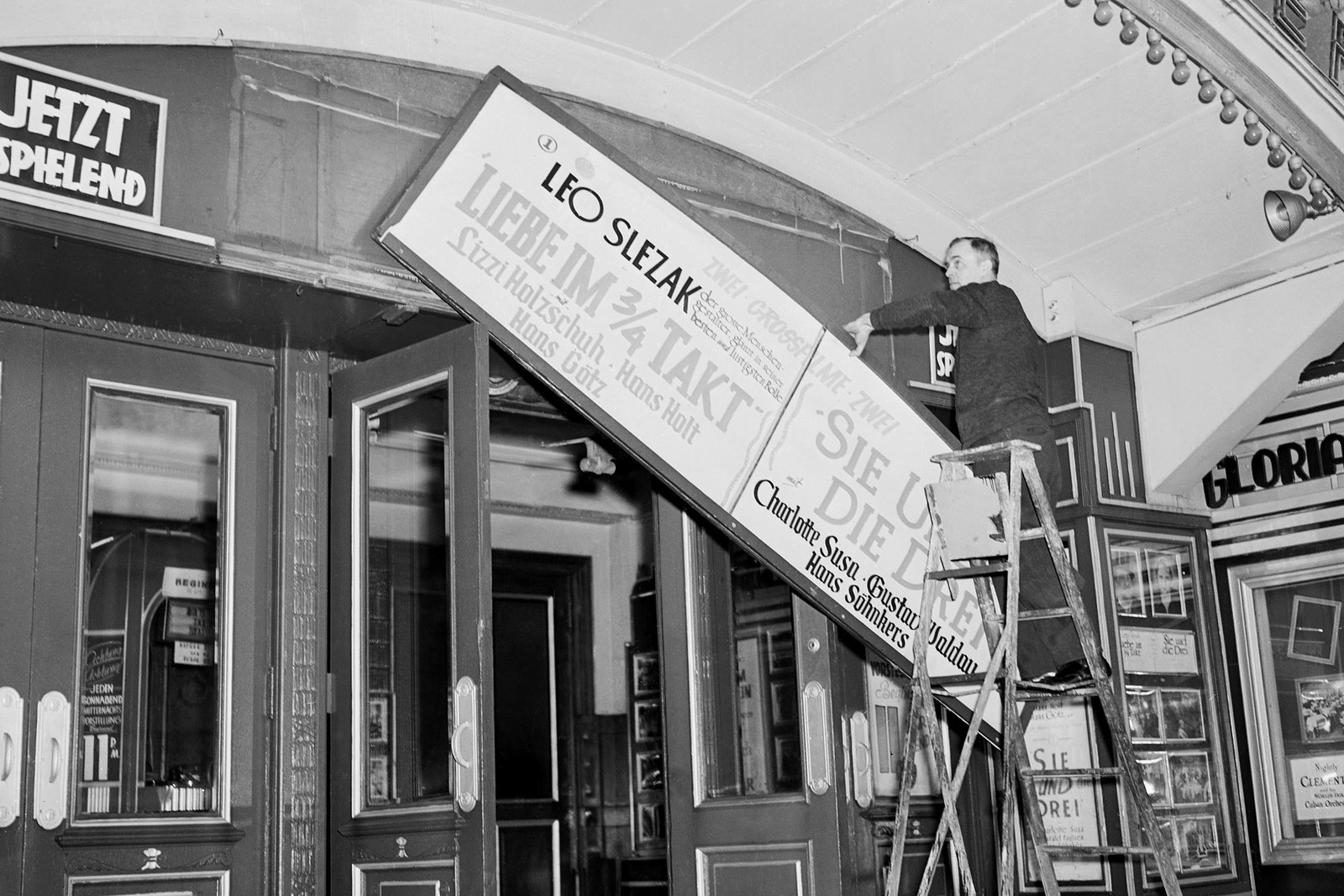

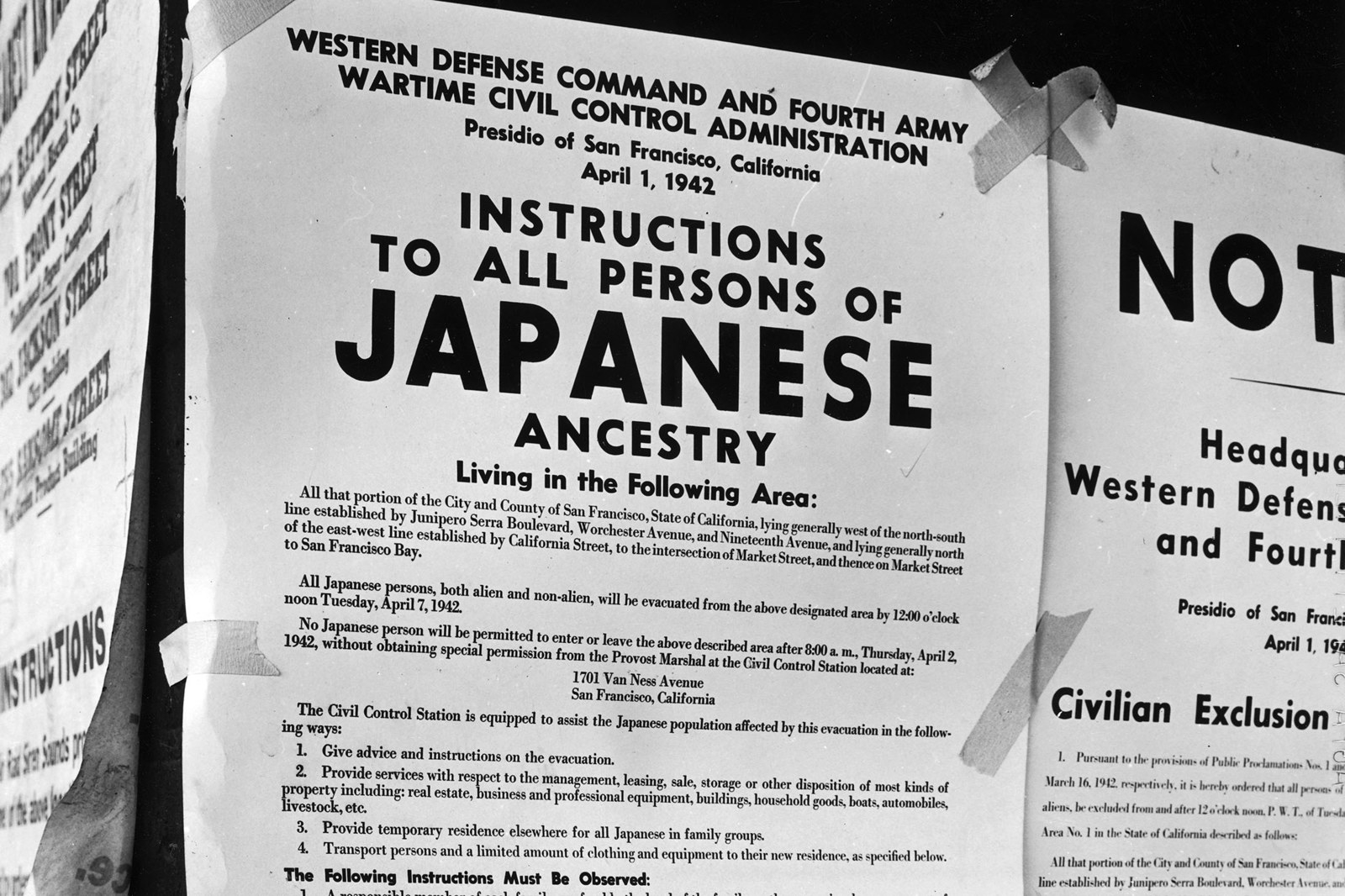
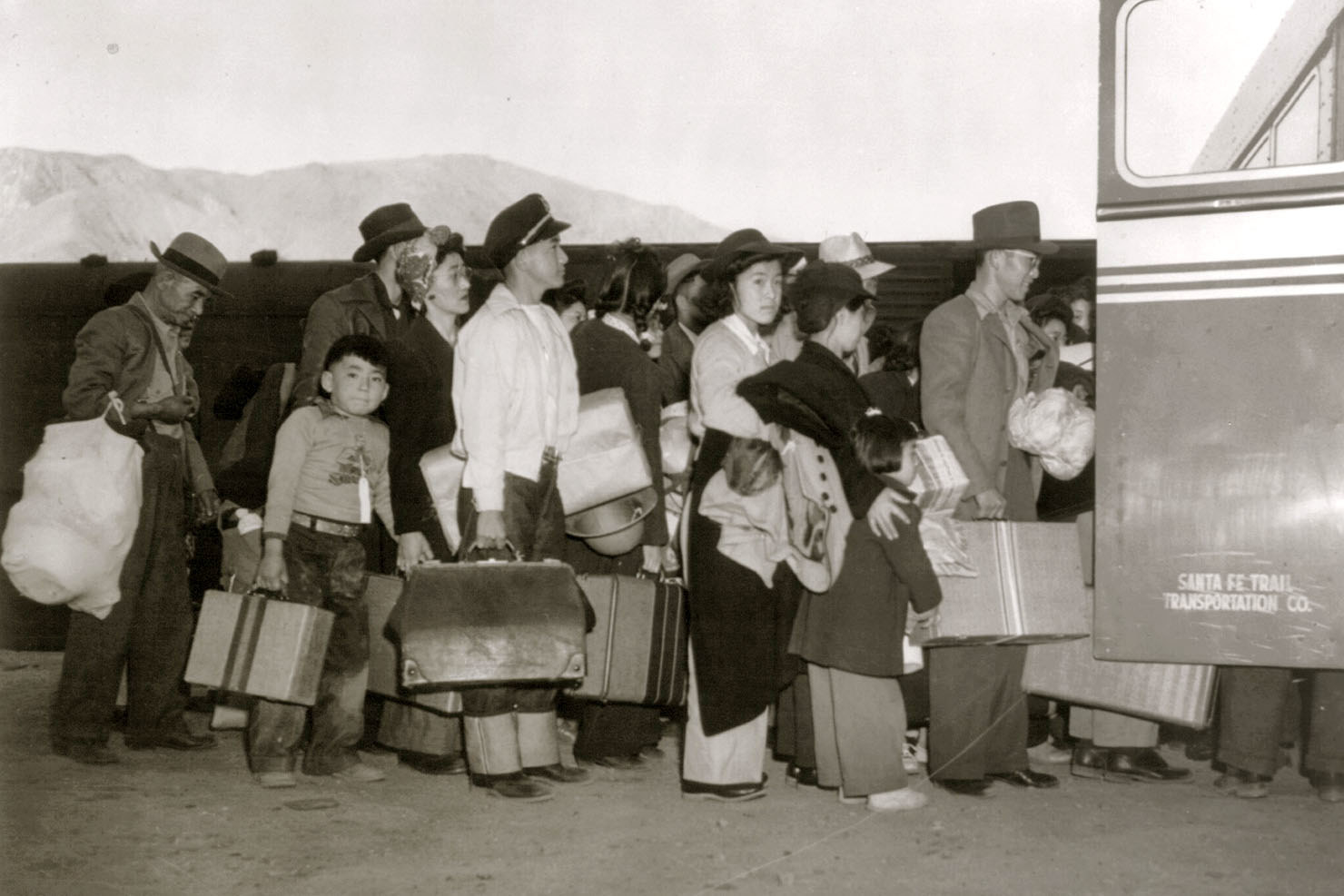
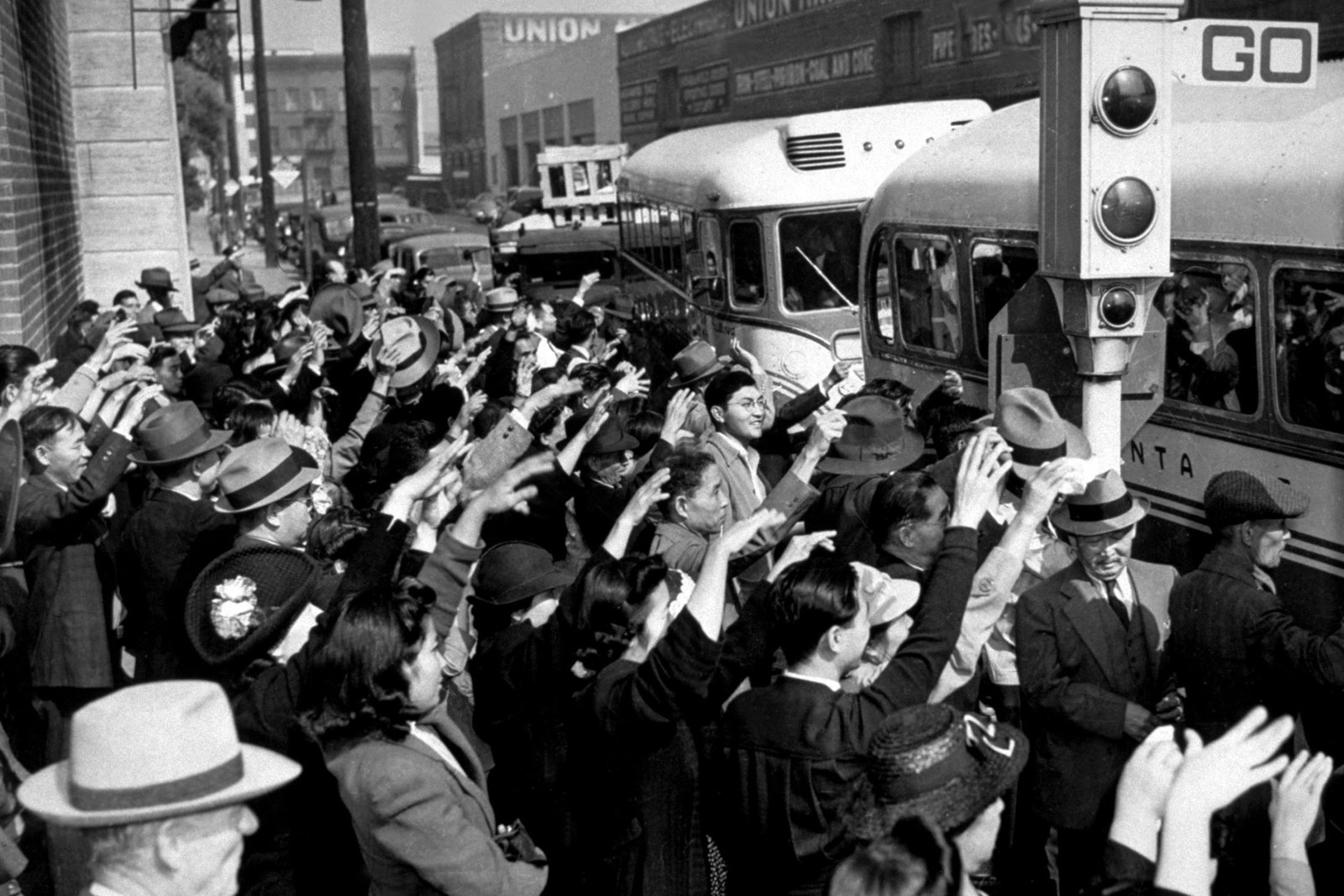
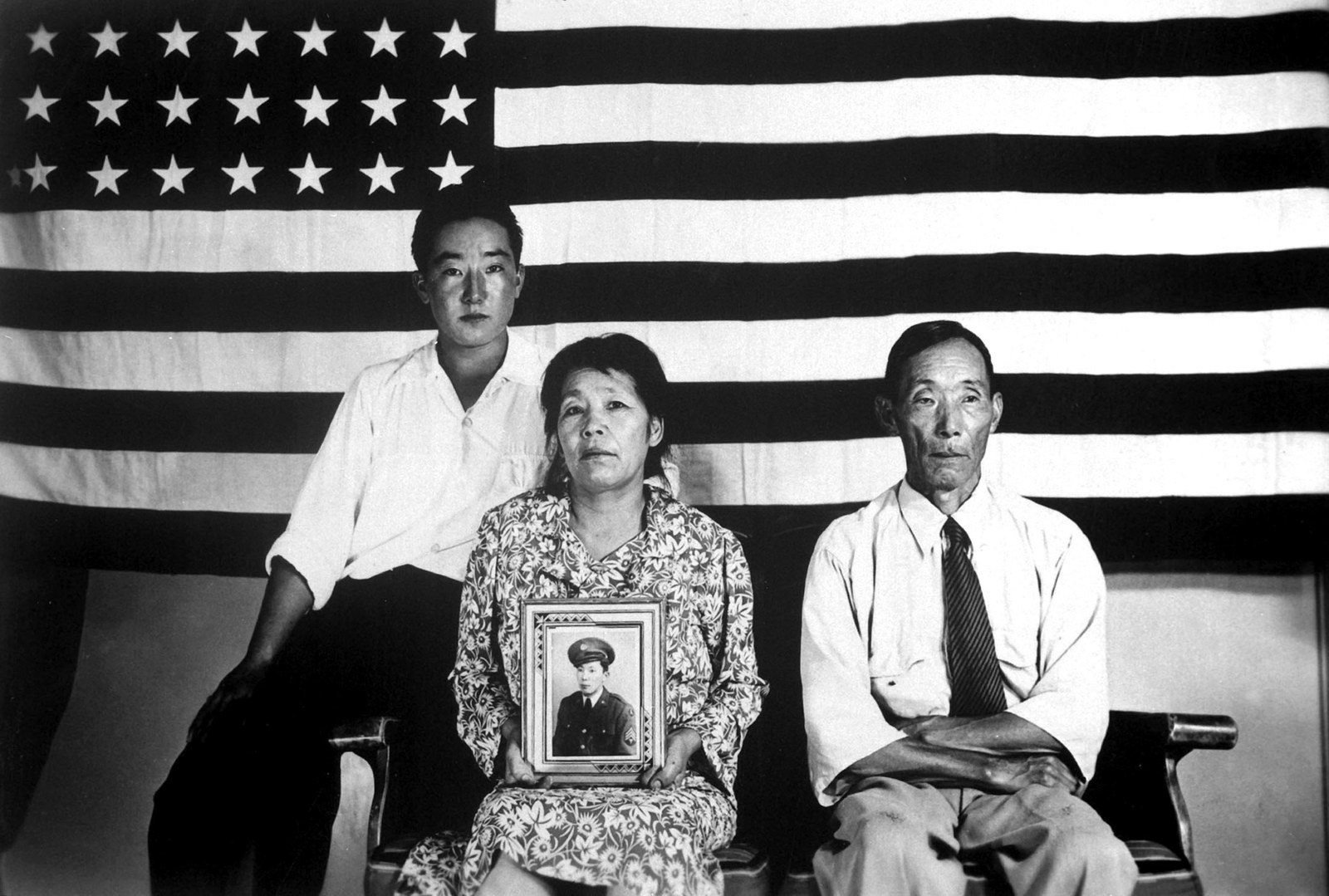
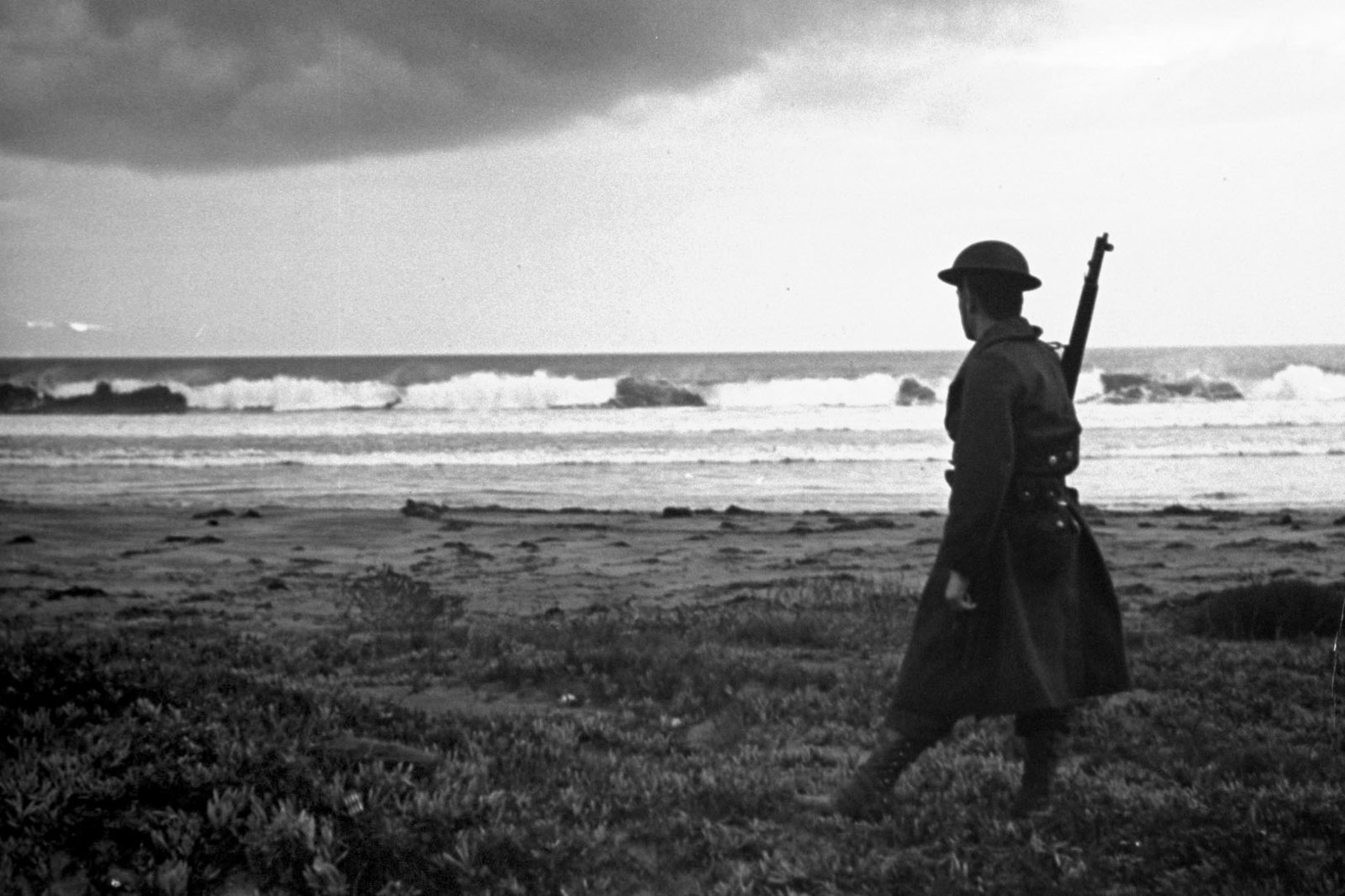
CORRECTION
The name of the American Women’s Voluntary Services was misstated in an earlier version of this post.
On Dec. 7, 1941, the Imperial Japanese Navy launched a surprise attack on Pearl Harbor, killing 2,403 Americans and injuring more than 1,000 others. Within the week, the US had officially entered World War II.

A crowd on Broadway in New York City holds up newspapers announcing the Japanese attack on Pearl Harbor on Dec. 7, 1941.

President Franklin D. Roosevelt signs the resolution declaring that a state of war exists between the United States and the Japanese Empire on Dec. 8, 1941.

Western Union messengers leave the White House on Dec. 7, 1941, with new information on the Pearl Harbor attack.

Staff members of the Japanese Embassy in Washington, DC, burn papers and documents in the backyard of their building Dec. 7.

American sailors in Hawaii place leis over the graves of those who died in the attacks on Pearl Harbor during spring 1942.

Swearing-in of US soldiers after the Japanese attack on Pearl Harbor, 1941.

Applicants for the Navy are inspected before leaving for boot camp Dec. 9, 1941.

A soldier trains with his bayonet on a dummy resembling Adolf Hitler on Dec. 19, 1941.

Civilian employees at McClellan Air Force Base engage in firearms training to be able to fill in for some of the men called off to war, in Sacramento on July 18, 1942.

US Army Boeing B-17 airplanes fly in a precise pattern over New York City, 1941.

Anti-aircraft searchlights undergo a test in the sky above the General Electric Company at Schenectady, New York, on Dec. 19, 1941.

An instructor with the American Women’s Voluntary Services demonstrates how to black out windows for defense against air raids on Dec. 13, 1941.

Lights in Times Square are dimmed to conserve energy on March 31, 1942.

Schoolkids practice an air raid drill at an undisclosed location on Dec. 14, 1941.

High school girls practice marksmanship at Roosevelt High School in Los Angeles as part of the school’s Victory Corps, a program designed to train students for combat, 1942.

Freshmen girls at Good Counsel College in White Plains, New York, break ground for a WWII victory vegetable garden on April 23, 1942.

Aluminum is collected at an undisclosed location as part of the war effort, circa 1941.

Crowds of women buy silk stockings at Gimbels Department Store in New York City in anticipation of a wartime silk shortage, circa 1941.

A large advertisement for defense bonds and stamps is hung in New York City’s Grand Central Station, circa 1941.

A worker removes German posters and signs describing a German movie from the Casino Theatre in New York City, on Dec. 11, 1941.

The day after the attack on Pearl Harbor, the owner of this shop in Oakland, California, who is a University of California graduate of Japanese descent, put this notice across his shop front.

Posted notice informing people of Japanese ancestry of imminent relocation rules due to fears of treason and spying during the early years of WWII.

Japanese Americans transfer from train to bus at Lone Pine, California, bound for an internment camp at Manzanar, circa1942.

Hundreds of Japanese in Los Angeles board buses for San Francisco where they will sail back to Japan, circa 1941.

Portrait of the Hirano family, George (left), Hisa, and Yasbei, at the Poston Internment Camp, in Poston, Arizona.

West Coast preparedness during WWII.
The name of the American Women’s Voluntary Services was misstated in an earlier version of this post.